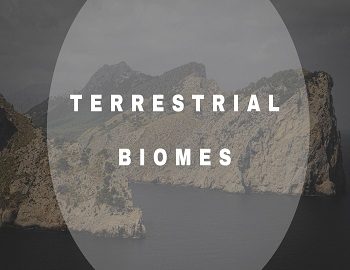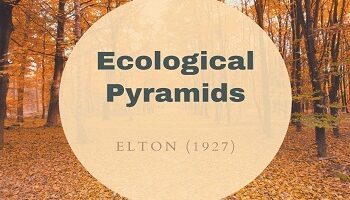Table of Contents
Terrestrial Biomes:
Various physical factors such as sunlight (intensity and duration), temperature, rainfall and seasonal changes determine the patterns of life and hence the types of biomes on land. Let us, now, consider the various terrestrial biomes.
Forest Biomes:
There are four kinds of forest biomes. These are-
Tropical Evergreen Forests (or Tropical Rain Forests):
These forests occur when rainfall is high (about 200 cm or more, annually) and uniform, there being no dry periods. Tropical evergreen forest biome is found in India, the East Indies, the Amazon Basin of South America and Congo Basin of Africa. The tropical evergreen forest has deep dense vegetation. The trees are of different heights forming distinct layers. The tallest trees (50-100 m high) constitute almost a continuous canopy at the top. There are many types of epiphytes and climbers which grow on the trees to reach light for carrying out the process of photosynthesis. Though the sun-light in the region of forest is strong but very little of it reaches the ground through the dense foliage. Consequently, no jungle is developed at the bottom layer. There are bare spots in certain areas.
In India, the tropical evergreen forests include rubber trees, timber trees like ebony, mahogany and rosewood, spice plants like cloves, cinnamon and nutmegs, palms, plantains, bamboos, orchids and cycads. Each layer of the forest is inhabited by different animals. There are more animals on the richer upper levels than the lower levels. The dominant vertebrates of the upper levels are the brilliantly coloured birds- birds of paradise, parakeets, toucans etc. Monkeys, bats, insects, scorpions, snails, elephants, tapirs are other important animals of the tropical evergreen forests.
Tropical Deciduous Forests:
These forests occur in India, the West Indies, Eastern region of Brazil, Indo-China and the North-Eastern projection of Australia.
The tropical deciduous forests are found in tropical regions which experience dry and wet seasons. These have trees with broad leaves which they shed during the dry season and, thus, the name tropical deciduous. The trees are less dense and constitute less number of levels in comparison with tropical evergreen forests. Due to availability of sun-light at the bottom, the bottom level has a very dense growth of shrubs and herbs. There are only a few epiphytes and climbers. The climate of the forest is favourable for the decomposition of the fallen leaves by the decomposers. Typical trees of the deciduous forests in India are mahul, sal, jamun, amla, Kusum, teak, bigasal, semul and palas.
Temperate Deciduous Forests:
These forests occur in the Northern hemisphere in Eastern United States, Western Europe, Manchuria, South-Eastern China, Korea and Japan, and in the Southern hemisphere in Eastern Australia and in New Zealand. Well defined summer and winter with fairly abundant (75-150 cm annually) and well-spaced rainfall favour temperate deciduous forest biome.
The temperate deciduous forests have broad-leaved deciduous trees in two layers. The trees shed their leaves in autumn, remain bare during winter and bloom again in spring. Below the lower layer of trees, stands a layer of shrubs along with herbs. The bottom layer has a growth of mosses and lichens. Typical trees of the American forest are elms, maples, beeches, oak and hickory.
Tree cavities shelter the birds and small mammals, shrub layer is the living place of spiders, centipedes, reptiles, birds and different mammals. All levels of the forests contain insects.
Coniferous Forests (Taiga):
These forests occur mainly in the Northern hemisphere, stretched across North America and Eurasia. In the Southern hemisphere, these occur in the South Island of New Zealand. The region of coniferous forests has a long and severe winter and mild summer with a short growing season. Tall (about 10 m in height), cone-bearing and needle-leaved evergreen trees constitute the dominant vegetation. The common trees are fir, pine and spruce. The vegetation of the coniferous forests forms four layers- evergreen trees, short shrubs, low herbaceous plants and mosses & lichens. The ground remains covered with a thick layer of fallen needles and other dead organic matter because the cold climate does not favour the decomposers.
There is rich and varied animal life in the coniferous forests, in summer, due to the abundance of food such as berries, nuts and cones. Some of the animals seen, during summer are insects, moose, lizards, snakes, deer, fox, wolf, squirrel and beaver. The reindeer and the caribou migrate from the arctic tundra to spend winter in the coniferous forests.
Grassland Biomes:
The grasslands are the grain-growing and cattle-raising areas and hence are of great economic importance. The favourable climate for the grassland biomes is the intermittent rainfall (25 to 100 cm, annually), cold in winter and hot in summer. Life in the grasslands is rich. The dominant vegetation is that of grasses, legumes and composites. Shrubs and trees are found scattered or as belts along the streams and rivers. The animals are of grazing (example- bison, antelope and zebra) and burrowing (example- rabbit, gopher and prairie dog) forms. There are also many insects and birds.
There are two kinds of grassland biomes. These are-
- Tropical Grasslands (Savanna)- These grasslands occur in India, Africa, Australia and South America. Tropical grasslands provide shelter to some of the famous game animals of the world.
- Temperate Grasslands- These grasslands occur in North America, South America, Eastern Europe, Australia, South Africa and Northern and Western Aisa. Temperate grasslands are known as prairies in North America, pampas in South America, Veld in South Africa and steppes in Europe and Asia.
Desert Biomes:
The desert biomes occupy about one-fifth of the earth’s surface and occur in regions with less than 25 cm of annual rainfall and with extreme conditions of temperature. Rain mainly falls in a few torrential downpours. The temperature is considerably high during the day and low at night. The important deserts of the world occur in Northern as well as southern hemispheres. The great Western Desert (Death Valley) of the U.S.A, the Sahara Desert of Africa, the Gobi, the Arabian and the Thar Deserts of Asia are in the Northern hemisphere. The deserts of the Southern hemisphere are the Australian Desert, the Kalahari Desert in Africa, the Atacama and the Patagonian Deserts in South America.
The scarcity of water in deserts limits the vegetation which is, therefore, found less. The plants are typically widely spaced with a large bare area separating them. The characteristic plants of the deserts include date-palms, thorny shrubs, and cacti. Flowering annuals and grasses bloom and mature within a few available wet days. The animals of the deserts are mostly small and nocturnal. They include scorpions, spiders, lizards, reptiles, roadrunner, woodpecker, coral snake, rattlesnake, white-tailed deer, mountain ship, kangaroo and rat. The most important animal of the deserts is the camel which acts as a source of transport.
Tundra Biomes:
The region lying south of the Arctic ocean, and the polar ice cap and north of the coniferous forests are referred to as Arctic tundra. The tundra may be taken as a wet Arctic grassland or and Arctic desert which usually remains frozen. The characteristic features of the tundra biome are low temperature, thin soil and short growing season. Tundra biome is treeless. The vegetation includes mosses, lichens, sedges, shrubs and grasses. The plants are very low and the leaves are small and hairy or with folded margin. The flowers bloom and mature quickly. The animals of the tundra biome include a few species of insects, birds and mammals. Some of these are biting flies, mosquitoes, snowy owl, reindeer, arctic hare and polar bear. Higher altitudes have a tundra-like biome, called alpine.
Polar Region:
The polar zone lies beyond the tundra zone. It is permanently frozen and does not support any vegetation. It is, however, not without life. The polar region of the Arctic contains polar bear, seal and the walrus while that of the Antarctic is inhabited by the penguins.









Comments (No)